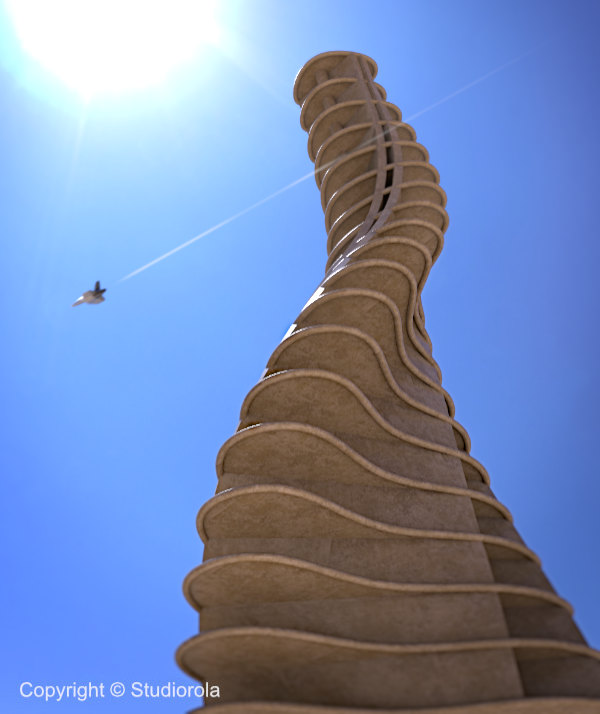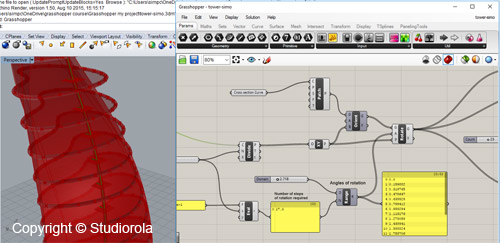Description
The building structure is inspired by patterns and shape-expressions occurring in Nature. It hinted of an ancient civilisation that was technological advanced and yet was also organically-linked to Nature.
General Workflow
The 3D designs was created using Rhino and Grasshopper 3D. The scene was composed and rendered using Keyshot. Affinity Photo was used to photo edit the rendering.
Below illustrated a work-in-progress screenshot within Rhino-Grasshopper environment. Rhino 3D is a popular NURBS-based precision modelling program. Grasshopper is a Rhino plugin for algorithmic and parametric form modelling.
Base curves for the design were created in Rhino. They were linked in an associative manner to Grasshopper for further geometry creation. The parametric nature of Grasshopper allows for easy changes to the form. For example, the number of storeys of the tower can easily be modified just by changing the value on a number slider.
When the form creation was finalised, the Grasshopper model was baked into Rhino surfaces. These surfaces are then exported to Keyshot for material assignment, composing and rendering. The rendered image was saved as a 32-bit high dynamic ranged EXR file. The reason for using a 32-bit high dynamic ranged format as opposed to a low-dynamic range format such as JPEG, is because it allows for superior exposure tweaking.
Affinity Photo was used to edit and enhance the 3D rendering. It is a new Photo and 2D Image Editor for Serif. Often touted as a Photoshop alternative, Affinity Photo is able to handle high dynamic range images such as EXR format.
The Artist is an Authorised Rhinoceros 3D Instructor.

